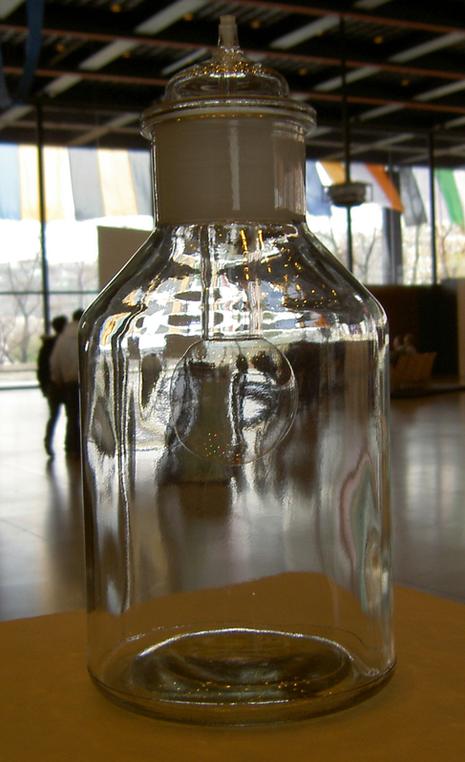

Melvin Moti, born 1977 in Rotterdam (the Netherlands) currently works and lives in Berlin. He studied at The Arts Academy Tilburg (BFA) and was a resident at “de ateliers” in Amsterdam. He is currently an artist in residence at Kunstlerhaus Bethanien in Berlin. Moti's work consists of single channel films and videos as well as photographs and writings and has been exhibited frequently in international art shows.
E.S.P
35 mm film, 20 min, color, sound.
E.S.P. - extrasensory perception - refers to purported phenomena of psychic information transfer, such as telepathy, studied by scientists since the 1930's without conclusive results.The British aeronautical engineer J.W Dunne possesed the ability to dream of future events. He kept a detailed diary on the subject and in 1927 published the book An Experiment with Time in which he formulated the theory that experiences of the past, present and future are inseparable from one another. The book inspired Melvin Moti in his 35mm film E.S.P; spoken passages from Dunne's notes accompany slow motion images of a bursting soap bubble. Using recording technology developed for military purposes - a metaphor for Dunne's military-schooled analytical thinking - the 0.2 seconds required for the soap bubble to burst are stretched out over eighteen elegant, hypnotic minutes.
Moti supplements the film with two objects : E.S.P. (K.O. Mortel), a black and white photograph of a boxing match held in 1946, and a jar with an actual soap bubble made of material that makes it unbreakable. The boxing match in question was initially called off by boxing legend Sugar Ray Robinson because he had dreamt that he delivered his opponent Jimmy Doyle a lethal blow. But Robinson was pushed into the fight despite his premonitory dream and the photograph depicts the precise moment Doyle falls in the ghostly light of the flash. In that instant, Robinson is made to witness his dream become reality.
Moti's interest in the limits of what can be mentally represented and what eludes historical systemization is apparent in earlier films. E.S.P., which recalls a scientific experiment, treats time as finite while articulating a desire for the eternal. The film depicts the soap bubble's possible future in the manner of a preview, whereas the photo depicts the dream event in retrospect. Film, photograph and object together translate Dunne's synchronic view of time into the exhibition space.
source : Short Guide for the 5th Berlin Biennial for Contemporary Art
Excerpts from interviews/articles :
While many of Moti’s works focus on a particular historical moment, an anecdote or a scientific fact involving intensive research, he claims not to be a storyteller: ‘I don’t want to bore the viewer with information or make them passive by fetishizing the research,’ he states in a telephone conversation from New York, where he has recently taken up an International Studio and Curatorial Program residency. His practice focuses rather on the act of reduction, on stripping away the facts to create an environment in which the immaterial element of the art work becomes the medium.
I wasn't very interested in storytelling in my recent projects. Although my recent films use the technique of a voice-over, the film is never about what is said. Neither is the film told in an image-narrative -- there are hardly cuts or edits, if any, so there is no mis-en-scene. I've been more interested in creating a sort of a ‘third space,' which is the result of two seemingly unconnected elements (sound and image) clashing -- I'm not looking to ‘puzzle' anybody. In each work there are tangible formal and conceptual relations between sound and image. But it's true -- I let the viewer take on his own journey rather than making them accept some second hand facts. Although in my mind, almost all ends are tied. On screen (and thus, for the audience) I leave a lot of loose ends -- things that one can search for oneself.
So the content of the film is not so much captured in the image, nor in the sound, nor in these two together, but rather in the moment after they have touched. The film therefore needs witnesses; it needs an audience to be the author. The content of the work is located in the mind of the witness, this is the ‘third space' I'm trying to inhabit, and is essentially individualistic instead of communal. Moreover, it comes into play as soon as the audience leaves the screening room; when they're moving again, in transition, on their way home (and hopefully a little longer after that).





No comments:
Post a Comment